Abstract
Tetraploid cells of Saccharomyces cerevisiae are generated spontaneously in a homothallic MATa/MATα diploid population at low frequency (approximately 10−6 per cell) through the homozygosity of mating-type alleles by mitotic recombination followed by homothallic switching of the mating-type alleles. To isolate tetraploid clones more effectively, a selection method was developed that used a dye plate containing 40 mg each of eosin Y and amaranth in synthetic nutrient agar per liter. It was possible to isolate tetraploid clones on the dye plate at a frequency of 1 to 3% among the colonies colored dark red in contrast to the light red of the original diploid colonies. Isogenic series of haploid to tetraploid clones with homozygous or heterozygous genomic configurations were easily constructed with the tetraploid strains. No significant differences in specific growth rate or fermentative rate were observed corresponding to differences in ploidy, although the haploid clones showed a higher frequency of spontaneous respiratory-deficient cells than did the others. However, a significant increment in the fermentative rate in glucose nutrient medium was observed in the hybrid strains constructed with two independent homozygous cell lines. These observations strongly suggest that the polyploid strains favored by the brewing and baking industries perform well not because of the physical increment of the cellular volume by polyploidy but because of the genetic complexity or heterosis by heterozygosity of the genome in the hybrid polyploid cells.
Full text
PDF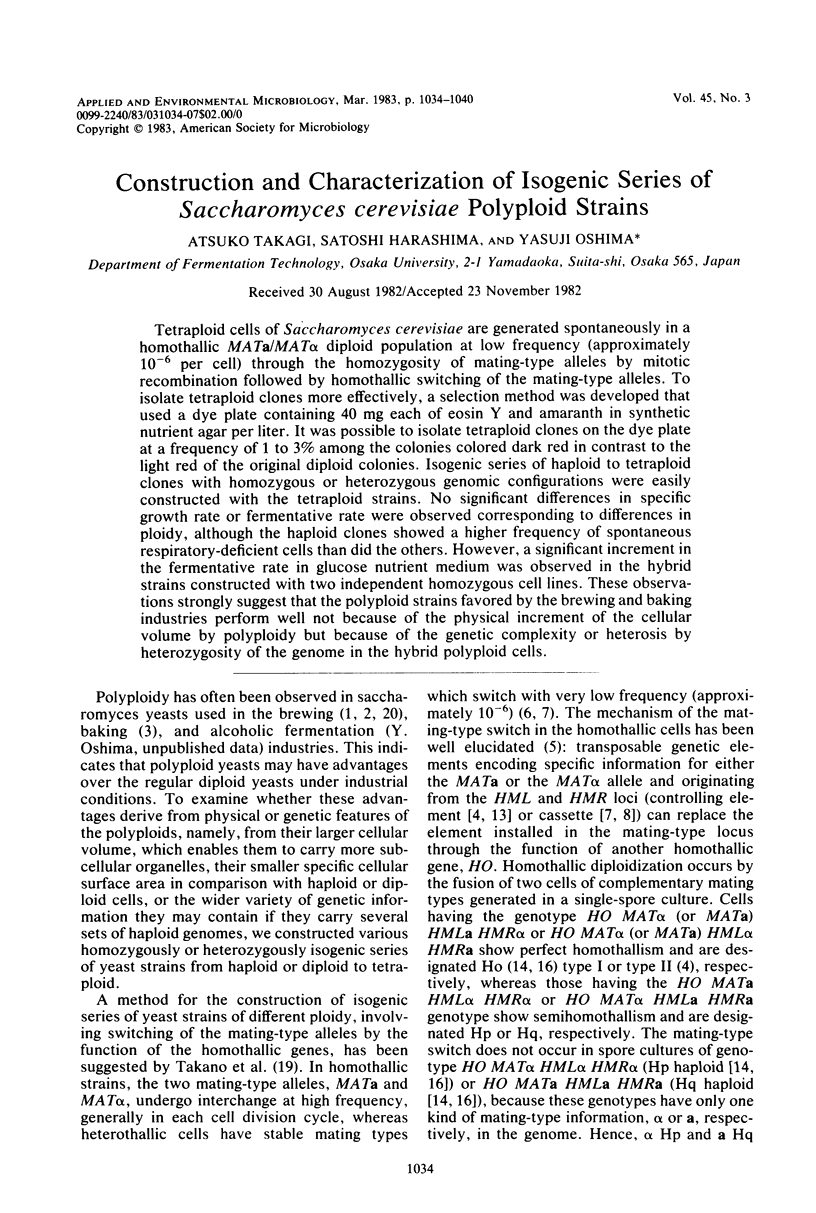
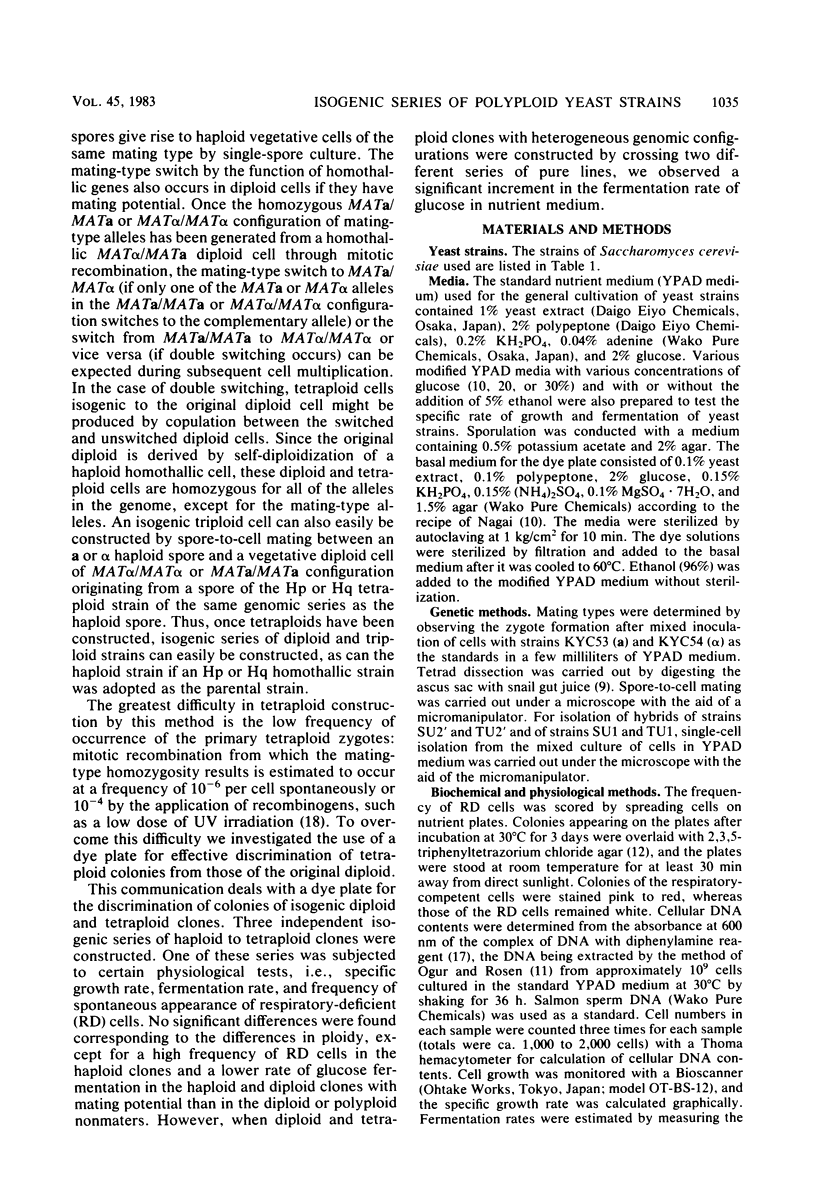
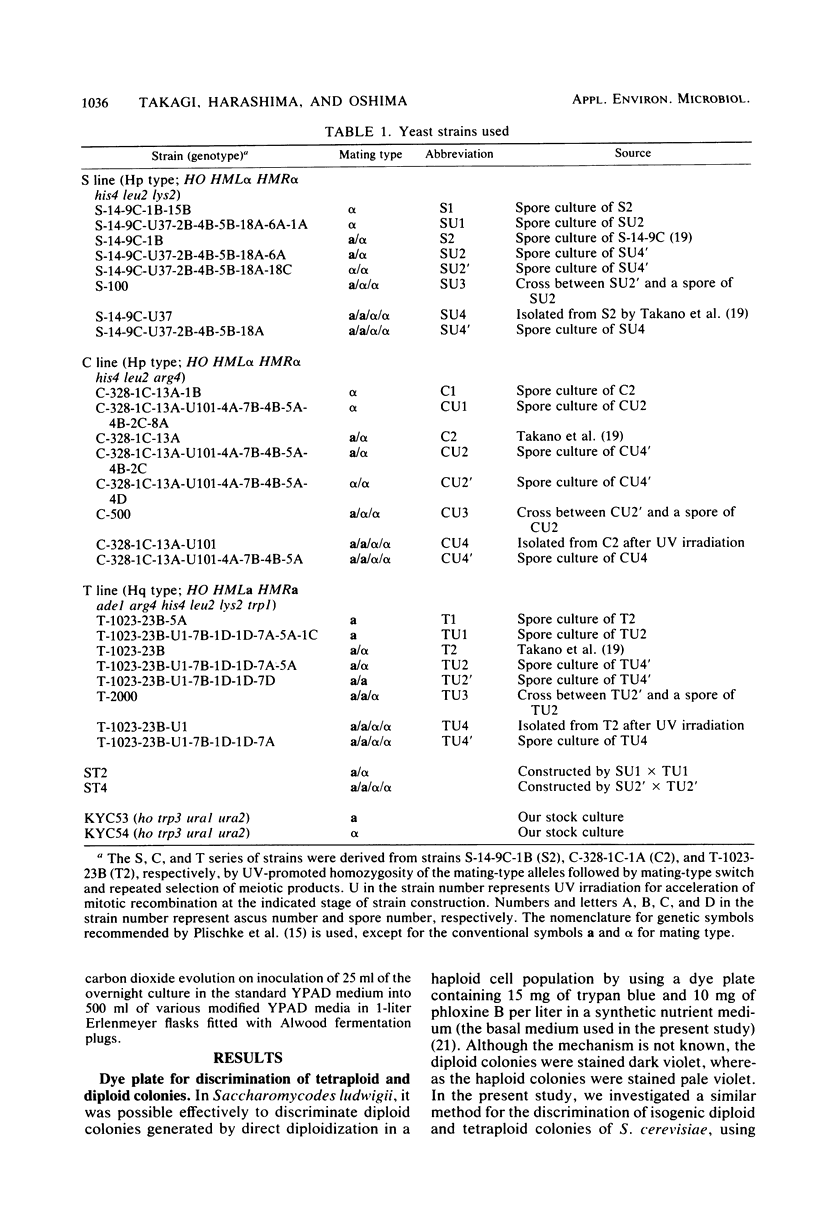
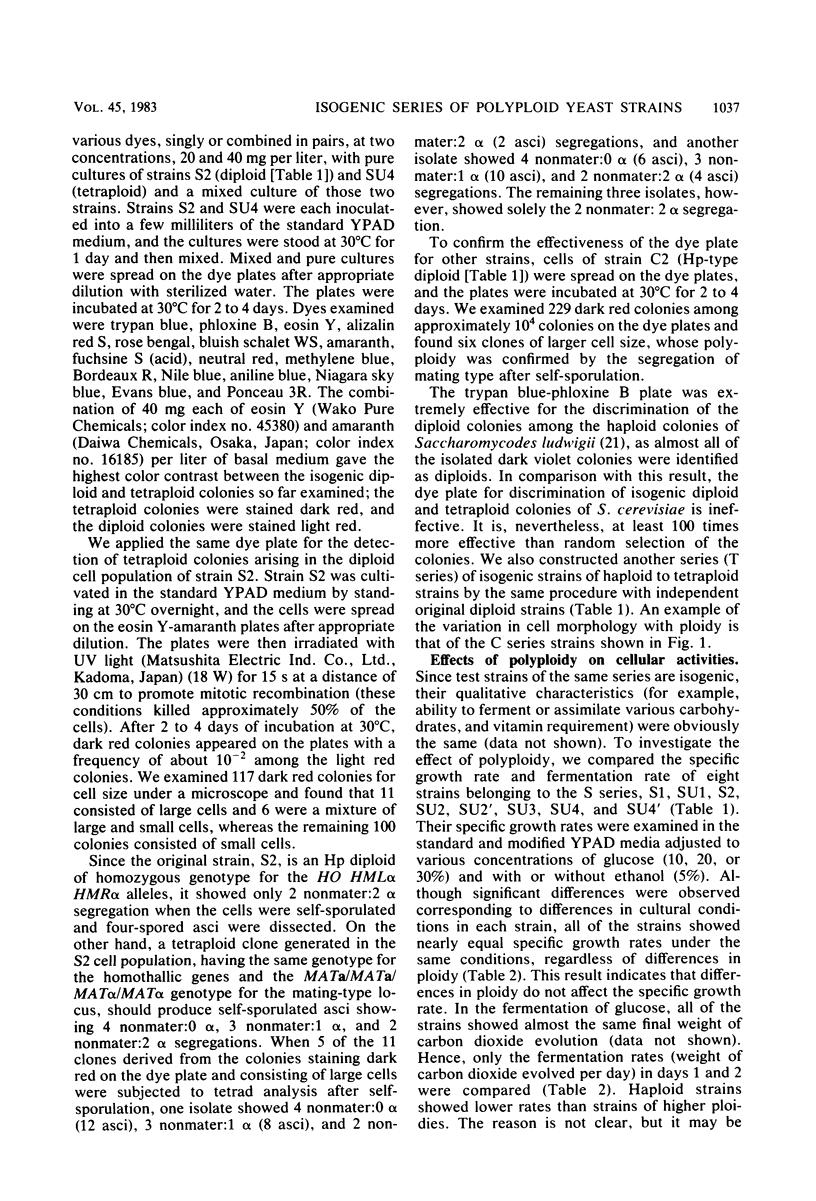
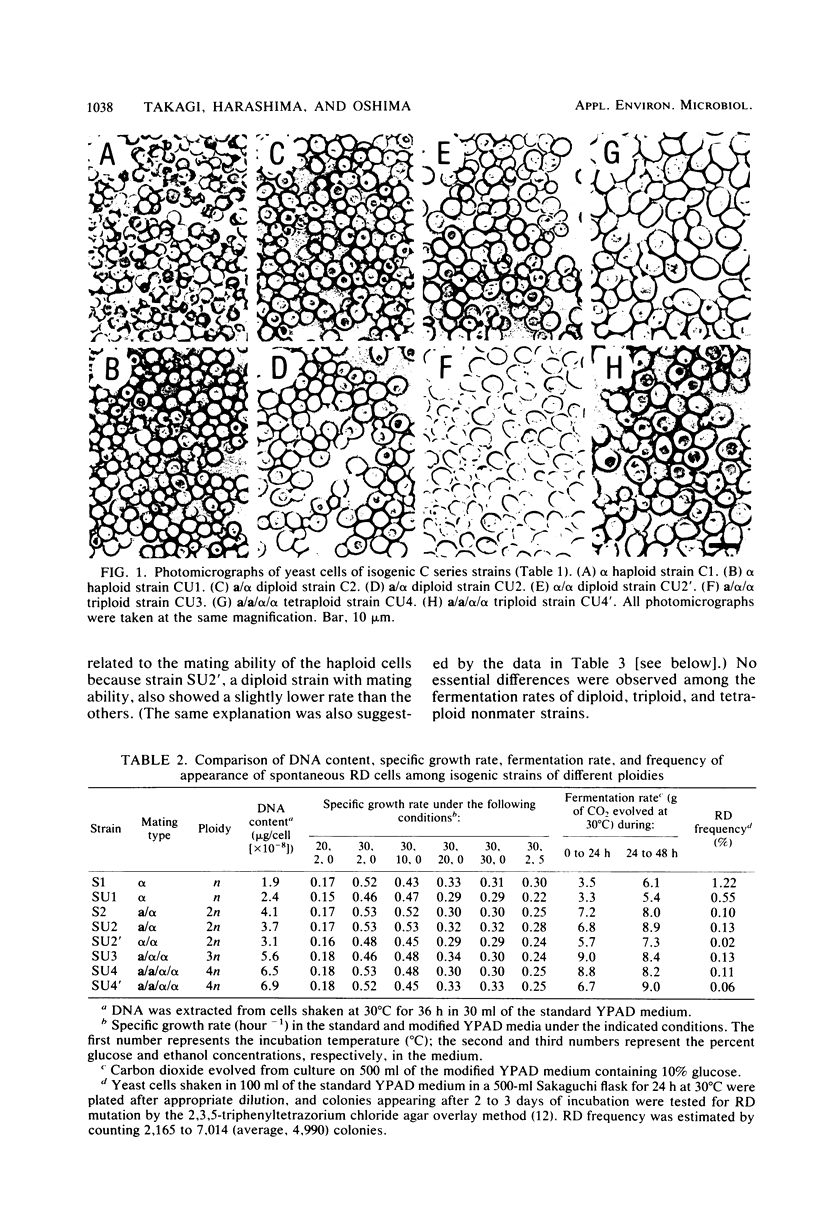
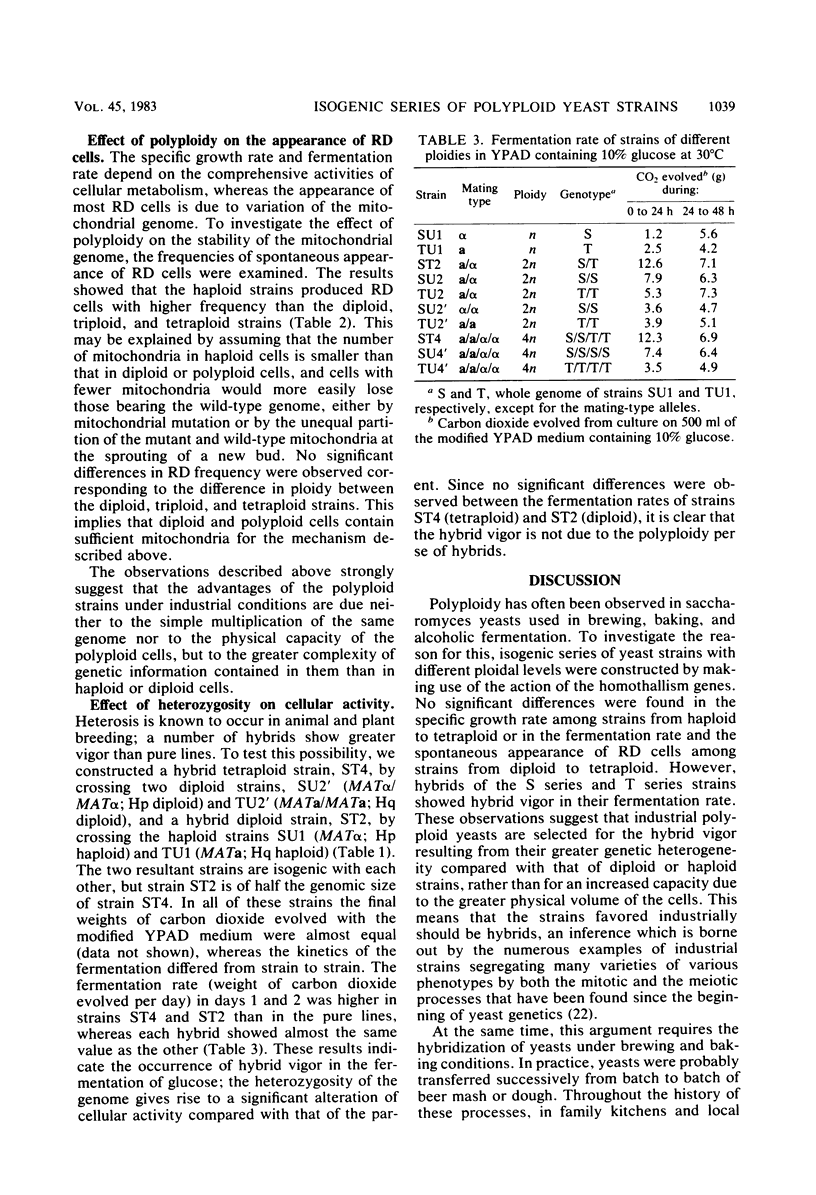
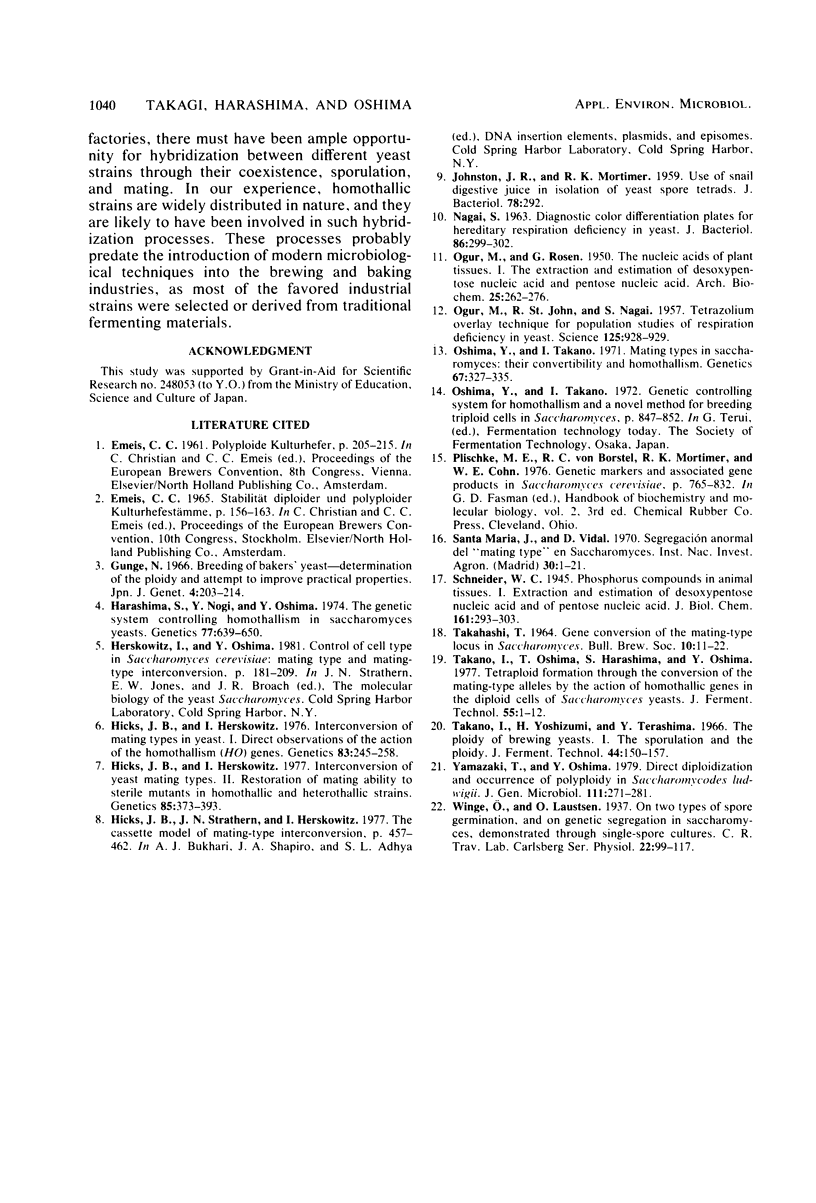
Images in this article
Selected References
These references are in PubMed. This may not be the complete list of references from this article.
- Harashima S., Nogi Y., Oshima Y. The genetic system controlling homothallism in Saccharomyces yeasts. Genetics. 1974 Aug;77(4):639–650. doi: 10.1093/genetics/77.4.639. [DOI] [PMC free article] [PubMed] [Google Scholar]
- Hicks J. B., Herskowitz I. Interconversion of Yeast Mating Types I. Direct Observations of the Action of the Homothallism (HO) Gene. Genetics. 1976 Jun;83(2):245–258. doi: 10.1093/genetics/83.2.245. [DOI] [PMC free article] [PubMed] [Google Scholar]
- Hicks J. B., Herskowitz I. Interconversion of Yeast Mating Types II. Restoration of Mating Ability to Sterile Mutants in Homothallic and Heterothallic Strains. Genetics. 1977 Mar;85(3):373–393. doi: 10.1093/genetics/85.3.373b. [DOI] [PMC free article] [PubMed] [Google Scholar]
- JOHNSTON J. R., MORTIMER R. K. Use of snail digestive juice in isolation of yeast spore tetrads. J Bacteriol. 1959 Aug;78:292–292. doi: 10.1128/jb.78.2.292-292.1959. [DOI] [PMC free article] [PubMed] [Google Scholar]
- NAGAI S. DIAGNOSTIC COLOR DIFFERENTIATION PLATES FOR HEREDITARY RESPIRATION DEFICIENCY IN YEAST. J Bacteriol. 1963 Aug;86:299–302. doi: 10.1128/jb.86.2.299-302.1963. [DOI] [PMC free article] [PubMed] [Google Scholar]
- OGUR M., ROSEN G. The nucleic acids of plant tissues; the extraction and estimation of desoxypentose nucleic acid and pentose nucleic acid. Arch Biochem. 1950 Feb;25(2):262–276. [PubMed] [Google Scholar]
- OGUR M., ST. JOHN R., NAGAI S. Tetrazolium overlay technique for population studies of respiration deficiency in yeast. Science. 1957 May 10;125(3254):928–929. doi: 10.1126/science.125.3254.928. [DOI] [PubMed] [Google Scholar]
- Oshima Y., Takano I. Mating types in Saccharomyces: their convertibility and homothallism. Genetics. 1971 Mar;67(3):327–335. doi: 10.1093/genetics/67.3.327. [DOI] [PMC free article] [PubMed] [Google Scholar]



